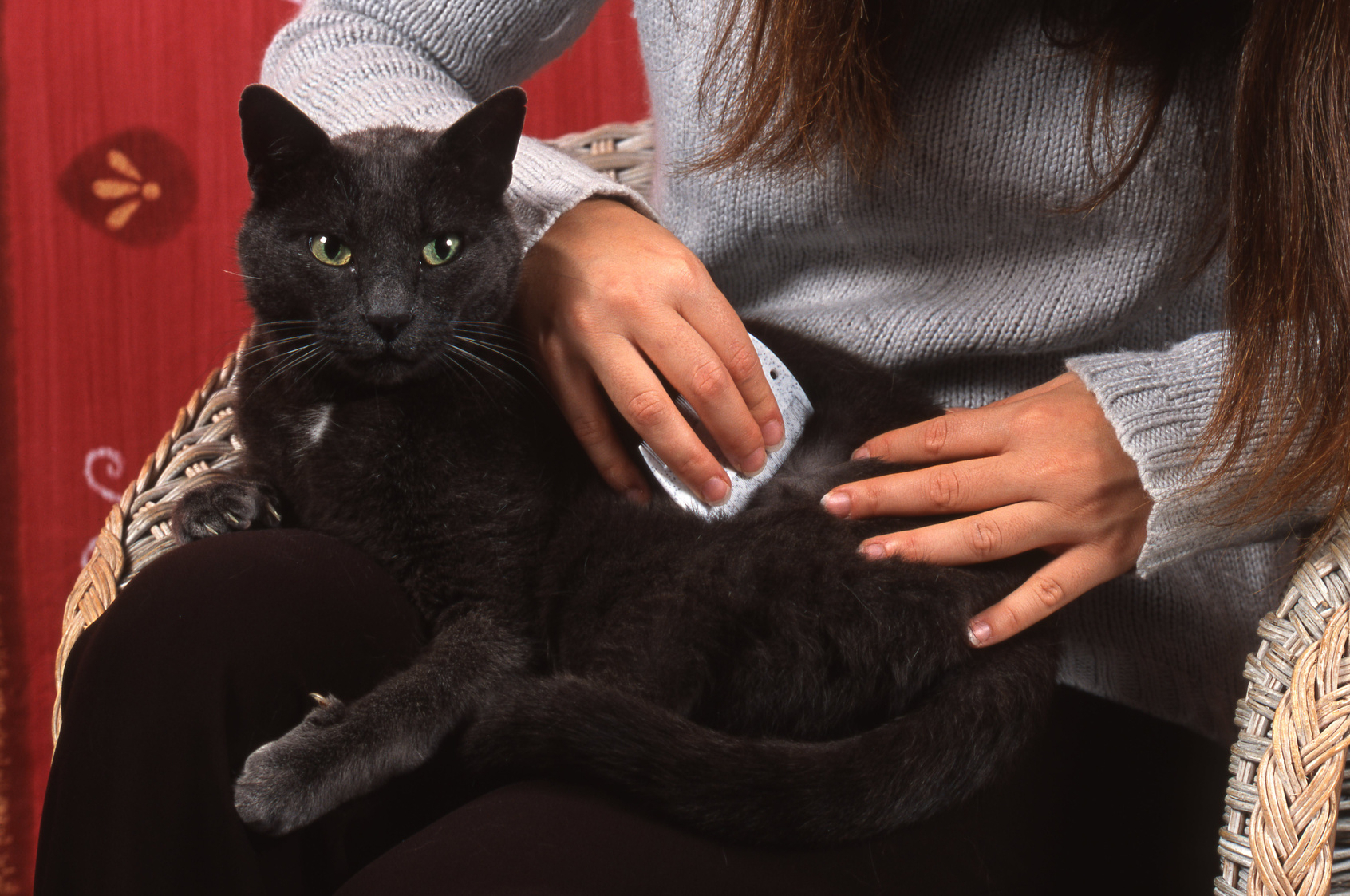Is your feline friend constantly scratching, leaving you sleepless and worried?
Fleas, ticks, and lice can transform your cuddly pet into a restless, uncomfortable, and potentially unhealthy animal.
It's not just about your kitty's well-being; these parasites can also invade your home, making every moment itchy and unbearable.
That's where Frontline, a trusted name in pet care, comes in. It promises to provide an effective shield against these annoying parasites.
But how does this treatment work on cats?
Does it really eliminate these unwanted guests and keep them at bay?
Let's explore how this well-known product works. We'll learn how to use it to keep our cats safe and free from itchiness.
After all, a happy cat means a happy purr.

Understanding Frontline: A Cat Owner's Guide
Owning a cat means putting their health first. Moreover, this involves protecting them from nuisances like fleas, ticks, and other parasites.
Frontline, a popular preventative, can be your top ally in this battle.
Let's break down what it is and how it safeguards your furry friend.
The Mechanics Of Frontline: How It Works
Frontline is a spot-on or topical treatment containing an insecticide called Fipronil.
Consequently, your cat's skin absorbs the liquid mixture, killing attached fleas, ticks, and chewing lice while preventing future infestations within a one-month period.
Even indoor cats are at risk of flea and tick infestations.
Thus, very feline owner should familiarize themselves with the preventatives used to protect their furry friends.
Read on as we talk about Frontline's ins and outs and what options you have if this is not the best choice for your companion.
Frontline Use: When And How
You can apply Frontline on your cat once they reach eight weeks old and are over 1.5 pounds in weight.
To avoid any toxicity caused by the insecticide found in this product, it is essential to wait until your furry friend reaches these requirements.

Amazon Offers Frontline For Cats And Kittens In An 8-Dose Pack Here
Administer this flea and tick preventative monthly. With the initial application, these ectoparasites on your cat will die and fall off.
Unfortunately, fleas or flea eggs can live in the environment much longer.
Hence, using this product on a monthly basis will stop the flea life cycle within your home and provide your cat with constant protection.
If you want a quick demo on how to apply this to your cat? Check out this video.
Safety Considerations: Using Frontline Twice A Month
Frontline will remain in the system for a full 30 days.
It is not completely safe to apply this preventative twice a month, and it is not necessary. Never exceed the stated dose on your package.
Applying Frontline twice a month is unlikely to cause an overdose for your cat, potentially creating skin reactions or damage at the application site.
Your cat may experience skin irritation, sensitivity, and redness. Therefore, to keep your cat comfy, it is best to stick to the recommended once-a-month dose.
Potential Risks: What Happens If You Use Too Much Frontline?
Applying too much Frontline can create toxicity or poisoning in your cat.
This product comes in measured pipettes with specific instructions to apply only one pipette to the skin at the application time.
If you apply an additional pipette or apply a Frontline product not specifically made for cats (or for your cat's weight), you risk putting their health in danger.
An insecticide called Fipronil is the active ingredient in this product. This insecticide works by inhibiting the neurotransmitters of the central nervous system.
When this inhibitor reaches exposed parasites, it overexcites their nervous system and kills them quickly.
When you dose your cat appropriately, there is enough insecticide to kill off parasites without affecting your cat's central nervous system.
However, if you give Frontline in excess, your cat can experience Fipronil poisoning.

What Does Fipronil Poisoning Look Like?
If your cat is exposed to too much Frontline, the symptoms can be concerning and sometimes even fatal.
Therefore, it's essential to understand the primary symptoms of Fipronil poisoning. These include uncoordinated movements, abnormal gait, hyperreactivity, tremors, muscle cramps, convulsions, and seizures.
These symptoms are directly related to the central nervous system enduring toxicity.
Moreover, your cat may experience more general symptoms like lack of appetite, agitation, vomiting, twitching, and weakness.
The severity of the symptoms will depend on the dose given and the kind of exposure (skin, inhalation, ingestion, or eyes).
These symptoms typically appear a few hours after applying the medication.
If you know your cat was dosed inappropriately, you should wash off any product left on the skin and visit your veterinarian for aftercare and supportive measures.
Frontline Application: How It Spreads
Apply Frontline to the skin between your cat's shoulder blades.
This is the recommended application site because it lowers the risk of your cat grooming the area where the medication lies.
You want the product to be absorbed through the skin, not ingested.
When you apply this preventative topically, it will seep into the skin's sebaceous glands and slowly release throughout the body.
This slow release allows for long-term protection against ectoparasites such as fleas and ticks.
Fipronil is lipophilic, meaning it loves to attach to fat cells.
The sebaceous glands absorb and spread about 5% of the Frontline, and the rest is found in fatty tissue.
This process of medication absorption through the glands is called translocation.

SIGN UP FOR THECATSITE'S EMAIL UPDATES >
Results: How Long Does It Take For Frontline To Start Working?
If you notice your kitty has a flea or tick infestation, you are probably antsy to get this sorted.
Once Frontline is applied to your cat, it takes up to 24 hours for the preventative to spread over the entire body.
All fleas and lice on the body of your cat will die within 18 hours of contact.
In some cases, you will see fleas falling off your cat after just four hours.
For ticks, it will take 48 hours or about two days for all to die and fall off your cat.
Your cat should be completely clear of ectoparasites by two days after the initial application of Frontline.
Frontline continues to protect your cat for a 30-day period and helps maintain a flea-less environment in your home.
Notably, the insecticide, Fipronil, is the ingredient that cures your cat of any infestations they experience.
Additionally, the other main ingredient in Frontline is S-Methoprene. S-Methoprene is responsible for stopping flea eggs from hatching.
This is why a monthly application of Frontline is important.
Efficacy Indicators: How Do You Know If Frontline Is Working?
When your cat is experiencing a flea or tick infestation, you will notice them scratching often and seeming generally uncomfortable.
A quick part of the hair can reveal obvious flea dirt.
You've applied Frontline and have waited a 24-hour period.
You know that Frontline is working when you see fleas or ticks starting to fall off your cat's body.
If the infestation is not severe, these parasites may not be as obvious when dying and falling off.
If your cat has stopped scratching, flea rashes start to clear up, or your cat feels more comfortable, these are indications that this preventative is doing the trick for your companion.

Problem Solving: What To Do If Frontline Isn't Working?
You may have concerns about Frontline not working for your cat. You've applied the medication, but your cat is still itching, and fleas are present when you comb through their hair.
What should you do?
It is best to find the reason why Frontline is not working for your cat. Some possible issues include the following:
- The source of the infestation has not been treated.
- Frontline has not been applied appropriately.
- Not enough time has passed.
If you feel like Frontline is not working on your cat, the best place to start is to ensure your environment is free of fleas or other mites.
This can include vacuuming regularly, using insecticide sprays, or bringing in an exterminator. Infestations of fleas cannot be cured overnight, unfortunately.
Practice patience and give the treatments some time to work.
One of our members posted an issue they were having with Frontline -kunoichi9280 reported, "I tried Frontline on my 15-week-old kitten a couple of weeks ago.
It worked great for a week, and then it just stopped.
I'm doing all the other flea treatment things recommended, and it's having zero impact (of course, I have a sucky bagless vacuum that probably isn't doing great on the carpets)".
This is a case of the environment not being treated completely.
You can keep treating your cat, but without the appropriate measures taken in the home, the fleas will find their way back into your cat's fur.
Alternatives: Other Options If Frontline Isn't Working For Your Cat
Maybe you find yourself at a dead-end with Frontline.
Do not worry!
There are an array of antiparasitics available for your cat.
Outside Frontline, other options available include Bravecto, Advantage, Revolution, and more.
Always talk with a professional in the veterinary field if Frontline is not the best choice for your companion.
Read more on our blog post, "Cat Fleas" here.

Wrapping Up: Frontline - A Top Choice For Flea Prevention
Frontline ranks high on the list of flea and tick preventatives. Every month, cat owners trust it to keep their pets safe.
The secret? Frontline works its magic right at the cellular level. Once applied to your cat's skin, it gets to work.
Yet, remember, each cat is unique. In some cases, Frontline may not be the right fit. Overdosing could even become an issue.
The bottom line? Always consult your vet. They'll help you make the best choice for your adorable, purring friend. After all, every meow counts!
Looking for more information on flea treatment? Have a look at our blog post, "How To Treat Fleas in Young Kittens."
SIGN UP FOR THECATSITE'S EMAIL UPDATES >

Note: We may get commissions for purchases made through links on this page.




One comment on “How Does Frontline Work on Cats?”